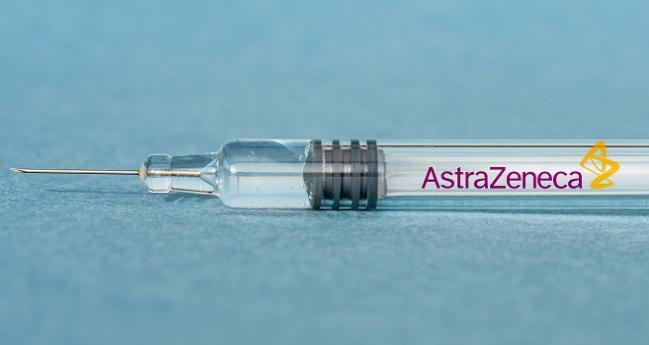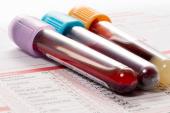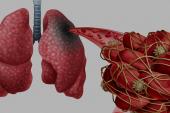Blood Clots After COVID-19 Vaccination Linked to Immune Response: UK Report
This is the second NEJM paper to highlight anti-PF4 antibodies as a cause for thrombotic events with the AstraZeneca/Oxford shot.

Yet another paper published in the New England Journal of Medicine is documenting the apparent mechanism behind the risk of thrombosis after vaccination with ChAdOx1 nCoV-19, the vaccine jointly developed by AstraZeneca and the University of Oxford.
The new study, by researchers in United Kingdom, highlights 22 patients who presented with acute thrombocytopenia and thrombosis, mostly cerebral venous sinus thrombosis, as well as a single patient with isolated thrombocytopenia and a hemorrhagic phenotype after vaccination. The vast majority of these patients—21 of the 23—tested positive for antibodies to platelet factor 4 (PF4), and this PF4-dependent syndrome was unrelated to the use of heparin.
“We have identified a novel mechanism and pathophysiological basis that prompts careful consideration of treatment,” according to Marie Scully, MD (University College London Hospitals NHS Foundation Trust, England), and colleagues. “Avoidance of platelet transfusions is critical, because such treatment would provide a substrate for further antibody-mediated platelet activation and coagulopathy.”
Additionally, the researchers suggest staying away from heparin for anticoagulation.
“Although evidence does not yet suggest that the use of heparin will exacerbate this condition, pending further data, we would recommend considering anticoagulation with the use of a nonheparin anticoagulant agent, such as argatroban, danaparoid, fondaparinux, or direct oral anticoagulants,” Scully et al advise. Intravenous immune globulin has been used successfully in the treatment of patients with spontaneous autoimmune heparin-induced thrombocytopenia (HIT), which is the closest comparison to this vaccine-induced syndrome, they add.
This pathogenic PF4-dependent syndrome, which has been dubbed vaccine-induced immune thrombotic thrombocytopenia (VITT), has been seen in other reports of patients who received the AstraZeneca/Oxford vaccine. Last week, the NEJM published a paper in which researchers demonstrated a pathophysiological link between the shot and clotting abnormalities, one that has led several countries worldwide to pause or revise their plans for using the vaccine. At the moment, the vaccine is not approved in the United States.
In the US, regulators have paused vaccinations for another vaccine, this one from Johnson & Johnson, following reports of cerebral venous sinus thrombosis in six women. The company is delaying rollout of its Janssen COVID-19 vaccine in Europe. Earlier this week, in a letter to NEJM, physicians in the US reported a single case of thrombosis associated with severe thrombocytopenia that resembled autoimmune HIT in a patient who had received the Johnson & Johnson vaccine.
American Heart Association (AHA) President Mitchell Elkind, MD (NewYork-Presbyterian/Columbia University Irving Medical Center, New York City, NY), said this new study, as well as its predecessors, appear to suggest a potential mechanism behind the thrombosis and thrombocytopenia risks seen with the AstraZeneca/Oxford and Johnson & Johnson vaccines. The PF4-dependent syndrome appears very similar to HIT, with one major difference being that these patients haven’t been treated with heparin, said Elkind.
“The good news is that it’s very rare, that it’s treatable, and as long we recognize it, then I think people who develop this rare side effect can be treated appropriately to prevent any serious consequences,” he told TCTMD.
High Levels of D-Dimer at Presentation
Of the 23 patients in the new British study, 14 were female. The median age was 46 years, although patients ranged from 21 to 77 years. All of the patients were considered healthy and fit at the time of vaccination, with one patient having a history of deep venous thrombosis. Another patient was taking oral contraceptives. They received the vaccine a median of 12 days before presenting to the hospital (range 6 to 24 days).
In terms of clinical presentation, 13 had features consistent with cerebral venous thrombosis, four had pulmonary embolism, one had deep vein thrombosis and bilateral adrenal hemorrhage, two had an ischemic stroke, and two had portal vein thrombosis. In total, seven patients died. The patients, none of whom were taking heparin, also had low levels of fibrinogen and extremely high levels of D-dimer at presentation, much higher than would be expected in patients with acute venous thromboembolism (median 31,301 fibrinogen-equivalent units), according to Scully and colleagues.
Testing for anti-PF4 antibodies was performed using ELISA, but additional testing using various techniques for HIT was performed in some patients to confirm the ELISA result. That functional HIT assay was positive in five of the seven patients tested and “confirmed the presence of platelet activation similar to that seen in patients with HIT,” the researchers say.
In last week’s series from Germany/Austria, researchers detailed the clinical and laboratory features of 11 patients who developed thrombosis/thrombocytopenia after receiving the ChAdOx1 nCoV-19 vaccine. Of the 11, nine had cerebral venous sinus thrombosis and six patients died. In an additional 28 patients referred for testing, all tested positive for the PF4-heparin antibodies on ELISA, none of whom had been treated with heparin.
Like the researchers, Elkind said hematologists are currently recommending physicians to not administer platelets to patients with VITT and to stay away from heparin for anticoagulation, just as in patients with HIT.
Just yesterday, the AHA and American Stroke Association released a statement on the risks of cerebral venous sinus thrombosis related to the J&J vaccine, noting the adverse event rate is extremely low at roughly one case per 1,000,000 vaccines administered. In the US, people who have received the J&J vaccine have expressed some worry about the risks, but “it’s important for people to know these complications are extremely rare,” said Elkind. Even in the population most affected by blood clotting after receipt of the J&J vaccine—younger women up to age 48 years—the risk remains low, said Elkind. The same applies to the ChAdOx1 nCoV-19 vaccine.
“The risk of getting this complication is so low compared to the risks of all kinds of bad things that can happen from COVID, including blood clots, stroke, heart attacks, deep vein thrombosis, and so on,” he said. “I think the benefits of these vaccines greatly outweigh the risk.”
Spontaneous cerebral venous sinus thrombosis is a very rare type of stroke, affecting just five out of every 1,000,000 people, so physicians need to have a high index of suspicion to make the diagnosis, said Elkind. However, in light of the media reports about thrombosis with the vaccine, suspicion will likely be quite high at the moment, particularly if the patient presents with a migraine or severe headache (among other subtle symptoms) after receiving the vaccine in the past 2 to 3 weeks. Seizures are another common symptom of cerebral venous sinus thrombosis.
Michael O’Riordan is the Managing Editor for TCTMD. He completed his undergraduate degrees at Queen’s University in Kingston, ON, and…
Read Full BioSources
Scully M, Singh D, Lown R, et al. Pathologic antibodies to platelet factor 4 after ChAdOx1 nCoV-19 vaccination. N Engl J Med. 2021;Epub ahead of print.
Disclosures
- Scully reports receiving grants from Shire, grants/personal fees from Novartis, and personal fees from Octapharma, Sanofi, Alexion, and Takeda.





Comments